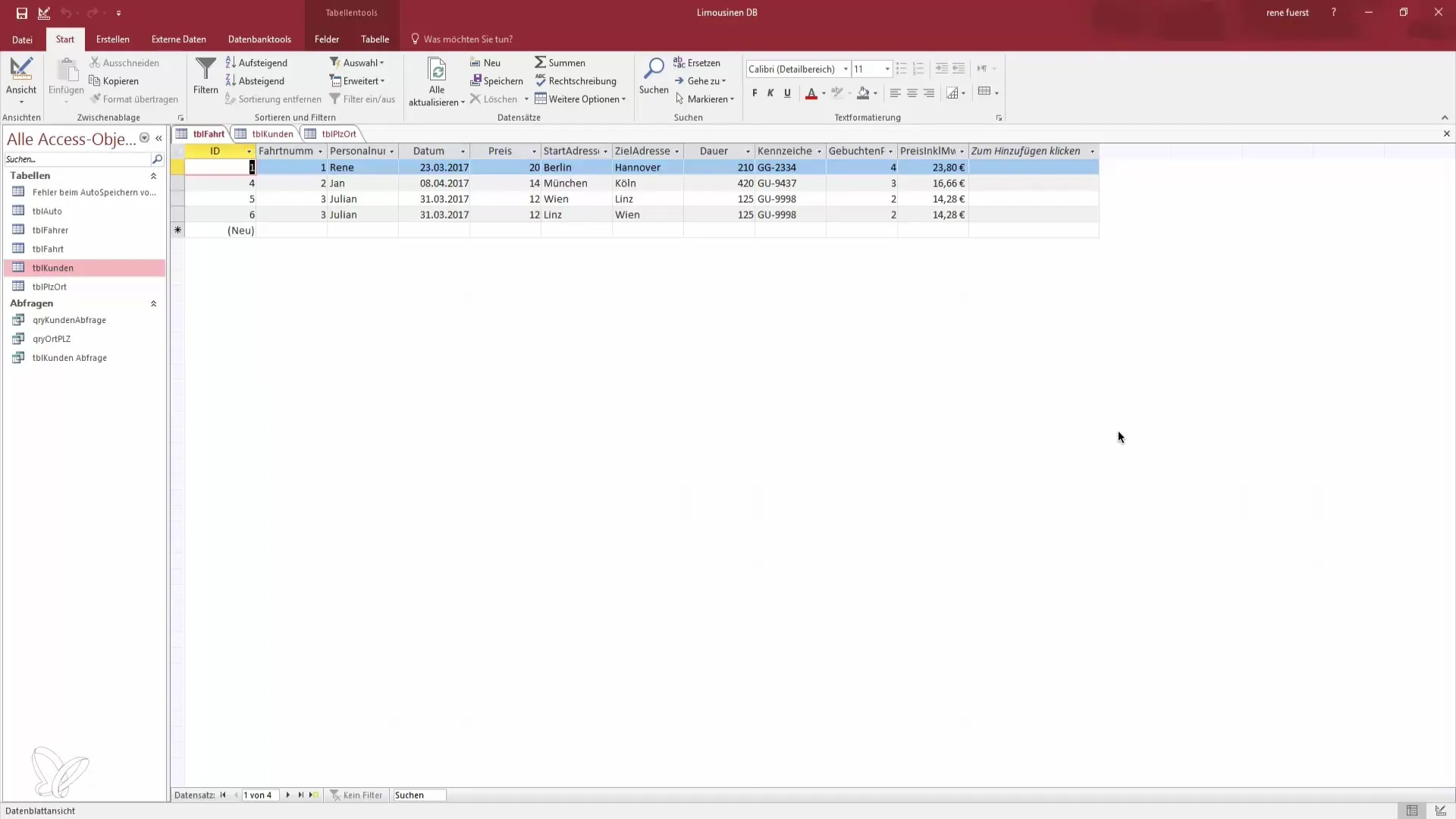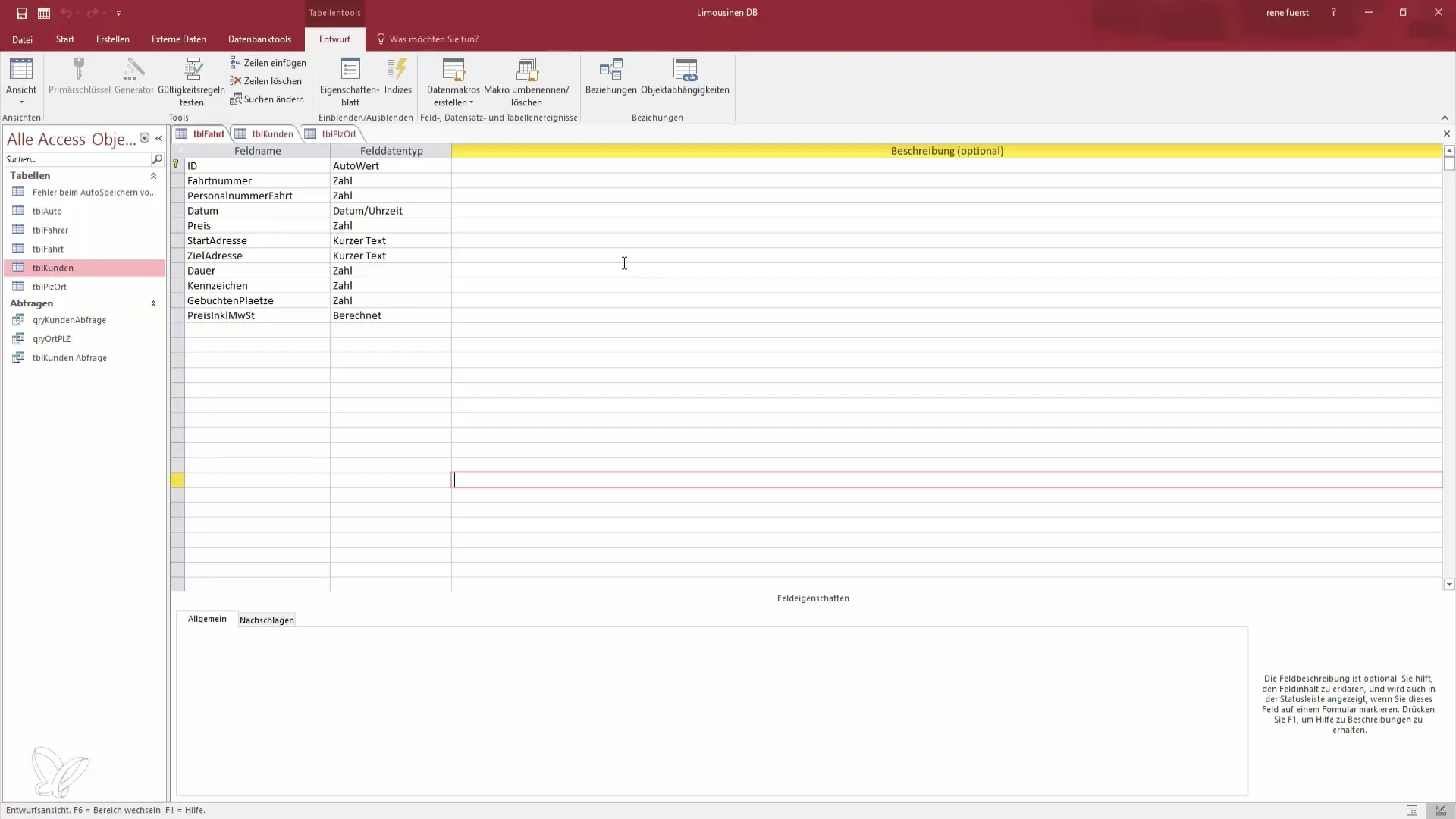You are working in the world of Microsoft Access and want to ensure that the entered data meets the desired standards? Validation rules help you validate values to ensure that only the correct information enters your database. In this guide, I will show you how to effectively set up validation rules for table fields.
Key Insights
Validation rules allow you to filter data in Microsoft Access so that only valid values are stored. You can set thresholds for numbers, dates, and other inputs to minimize errors and maintain the integrity of your databases.
Step-by-Step Guide
1. Access the Design View of the Table
To start with validation rules in your table, you first need to access the design view of the relevant table. Here, you can adjust all settings and properties of your fields.

2. Setting Validation Rules for Price Fields
In this step, we want to prevent employees from entering a price below a certain value. For example, you want to ensure that the price for rides is at least 10 euros. This is quite simple:
- Click on the corresponding field for the price in design view.
- In the properties of the field, you will find the option to adjust validation rules.
Here, you can enter a rule that ensures that the price is greater than 10.
3. Entering the Validation Rule
In the validation rule field, enter a condition. You can do this using the "greater than" > symbol, followed by the number 10.

4. Saving Changes
After entering the validation rule, it is important to save the changes. Be careful not to forget to save so that the new rules become active.
5. Checking Input Values
You can now create a new record. Try entering a price of 9 euros. You should receive an error message indicating that the validation rule has been violated. This shows that your rule is working correctly.
6. Improving the Error Message
To enhance usability, you can customize the error message. If someone enters a price of 9 euros, you can set a message like "The amount is too small, please specify a higher price."
7. Setting Up Validation Rules for Dates
Besides prices, you may also want to ensure that only current dates are entered into the database. Here you can adjust the validation rule to accept only dates within the last 30 days or the next 30 days.
8. Applying the Date Rule
To do this, go to the date field in your table. Enter the validation rule "between Date() -30 and Date() +30". This ensures that only dates within this range are stored.
9. Importance of Validating Existing Records
After setting the rules, you need to ensure that they only apply to new entries. When the system asks whether existing records should be checked, select "No". This prevents old records that may not comply with the new rules from causing issues.

10. Testing the Date Rule
Now create a new record to test the validation rule. Enter a date that lies outside the allowed range. You should receive an appropriate error message indicating that the date is incorrect.
11. Repeating Validation for Other Fields
Using the same principle, you can validate other fields in your database, for example, with birth dates to prevent minors from being recorded. Set validation rules here as well to ensure data integrity.
Summary - Properly Implementing Validation Rules in Microsoft Access
In this guide, you have learned how to effectively apply validation rules in Microsoft Access to ensure the quality and integrity of your data. You have covered the basics for price fields and dates and now know how to customize error messages for a better user experience.
Frequently Asked Questions
What types of validation rules can I set?You can validate numbers, dates, and text fields.
How do I customize error messages?Go to the properties of the field and edit the validation rule message.
What happens if I select "Yes" for checking existing records?Then all old records will be checked, which may lead to many errors.
Can I apply multiple rules for a field?Yes, you can combine complex conditions in a single validation rule.
Do validation rules also work in forms?Yes, validation rules in tables also apply to forms based on those tables.


